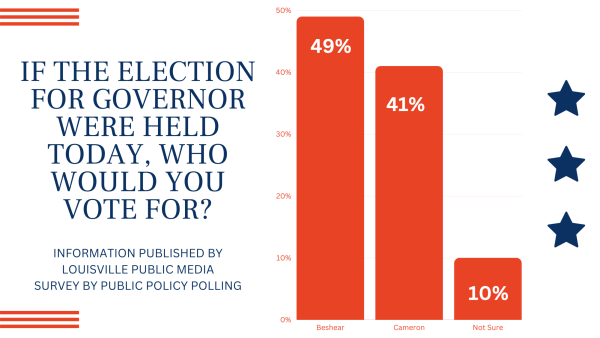Price on Politics: The Midterms
November 28, 2022
On Nov. 8, tens of millions of Americans traveled to the polls, voting on races from their US senator or representative to county clerks and judges. From partisan to nonpartisan races, Americans voted to shape their country for at least the next two years.
There were many surprises and many not-so-surprises.
Pundits across the nation were preparing for a so-called “Red Wave.” Historically, incumbent presidents with majorities in one or both houses of Congress have lost those majorities after their first midterm elections.
Polls before the election showed President Biden losing his majorities in both houses by large majorities. Leading up to the election, polls showed the Senate as a toss-up, while Republicans were expected to take back control of the House from the Democrats.
After election night, it was still unclear whether the Democrats would keep any of their majorities or whether the Republicans would take them. It was not until the Saturday after the election, Nov. 12, that it was known that Democrats would hold onto their majority in the Senate. Incumbent Nevada Senator Catherine Cortez Masto won reelection, keeping the seat blue and giving the Democrats the 50 seats needed to keep their majority. Democrats only needed 50 seats because Vice President Kamala Harris casts a tie-breaking vote.
It is unclear at this time, however, whether Vice President Harris’s tie-breaking vote will be needed. The contest in Georgia between incumbent Democratic senator Raphael Warnock and college and NFL football star Herschel Walker is headed to a runoff election. Neither candidate was able to reach the 50% vote threshold required by Georgia state law to declare victory. This means on Dec. 6 that Georgia voters will once again go to the polls, voting for only Walker or Warnock. Walker was rocked by scandal in the last weeks of the campaign, making his showing in the state even more impressive.
The surprisingly strong showing of Democrats in the Senate was paired with a surprisingly weaker showing by the GOP in the House.
On Nov. 16, over a week after the election took place, it was called that the Republicans won the house. While they were expected to win by a large margin, the margin was much closer. While not all races have been called, it can be expected that the Republican majority in the House of Representatives will be no larger than 15 seats.
With the GOP majority in the House, Democrats lose powers and ground they have held since 2018. Nancy Pelosi became Speaker of the House in 2019 after Democrats won back the House and will hold the job until the new Congress convenes. The Republican majority forces the Democrats to take a step back, removing one of their own from the Speaker’s chair.
On Nov. 17, however, Pelosi announced that she would not be seeking reelection as the Democratic Leader in the House, a position she has held for over nearly two decades. This creates a gap in the Democratic leadership that has not been open since 2003.
Pelosi has led the Democrats, proving to be one of the most skilled legislators in the nation’s history. She was instrumental in ensuring the passage of legislation like the Affordable Care Act in 2009 and the American Rescue Plan in 2021. It is unclear who will take Pelosi’s role, but you can be prepared to hear names like Majority Leader Steny Hoyer of Maryland and Democratic Caucus Chairman Hakeem Jeffries of New York in the mix.
Voters in five states had abortion measures on the ballot on Nov. 8, too. In each of the five states – Kentucky, California, Michigan, Montana and Vermont – voters rejected measures to outlaw all abortions in state constitutions or affirm the right to abortion.
Kentuckians rejected a measure that would amend the state constitution to say that there is nothing in the document allowing for abortion in the commonwealth. The measure failed by nearly 100,000 votes.
The measures in Kentucky and across the nation showed that voters are against constitutional measures that outlaw abortion totally. Following the Supreme Court’s overturning of Roe v. Wade, the future of abortion rights remain uncertain in the United States. In the five ballot measures, abortion-preventing measures were rejected. If this is any indication, it shows that the American people disagree with the Supreme Court.
Republicans and Democrats alike won governors races across the nation. Democrat Beto O’Rourke lost his bid for Texas governor to incumbent Republican Greg Abbott. Ron DeSantis of Florida won his reelection bid against Democrat Charlie Crist. DeSantis’s name has been floated as a 2024 GOP presidential candidate, and this reelection puts him in a place to launch a campaign.
What do the Midterm results mean?
With the changes in both the House majority and the Democratic leadership, Americans can expect President Biden’s agenda to be significantly slowed down. Where the administration had to work across the aisle in the Senate up to this point, the House was Democrat-controlled, so legislation could pass easily.
Now, however, the Biden administration faces an uphill battle in the House, needing Republicans in the double-digits to pass legislation. The GOP can effectively block any legislation they do not like while investigating the president for anything they can think of.
Republican Kevin McCarthy of California will likely become the new Speaker of the House when the new Congress convenes for the first time in January. The majority gives Republicans the power to begin investigation into the president and the Biden family. Many have called for investigations into Hunter Biden, the president’s son, as well as investigations into the COVID-19 pandemic.
The Republicans, of course, will pivot towards the 2024 general election, where they will hope to take back the Senate, keep the House, and one of their own in the Oval Office. The Democrats will remain committed to trying to help President Biden get his agenda through Congress.
In this pivot of attention and focus, the GOP will work to block as much of Biden’s agenda as possible. Democrats and the White House will have to bend to the Republicans, not the other way around.
Because the Democrats still hold the Senate, there is room for Democrats to get some things done. Nominees for the federal judiciary and the Supreme Court must be confirmed by the Senate. Legislation can still be passed, which gives the Democrats a starting point.
A divided Congress should force each side to work with the other. What will happen instead, however, is that neither side will be willing to compromise. There is opportunity for each side to shift towards the middle and bridge the gap. Obviously the American people are more divided than ever, but moderates will continue to be alienated.
Candidates backed by former President Donald Trump saw mixed results in all different races. This shows that Trump’s hold on the Republican party is at its weakest point since his election in 2016. Moderate Republicans have mixed feelings about the former president while far-right Republicans have flocked to him.
Trump announced his 2024 candidacy for president one week after the midterms, beginning a new season of elections, one that will be different from all others before.
Commentary writer Price Wilborn can be reached at [email protected]. Follow him on Twitter @pricewilborn.
























